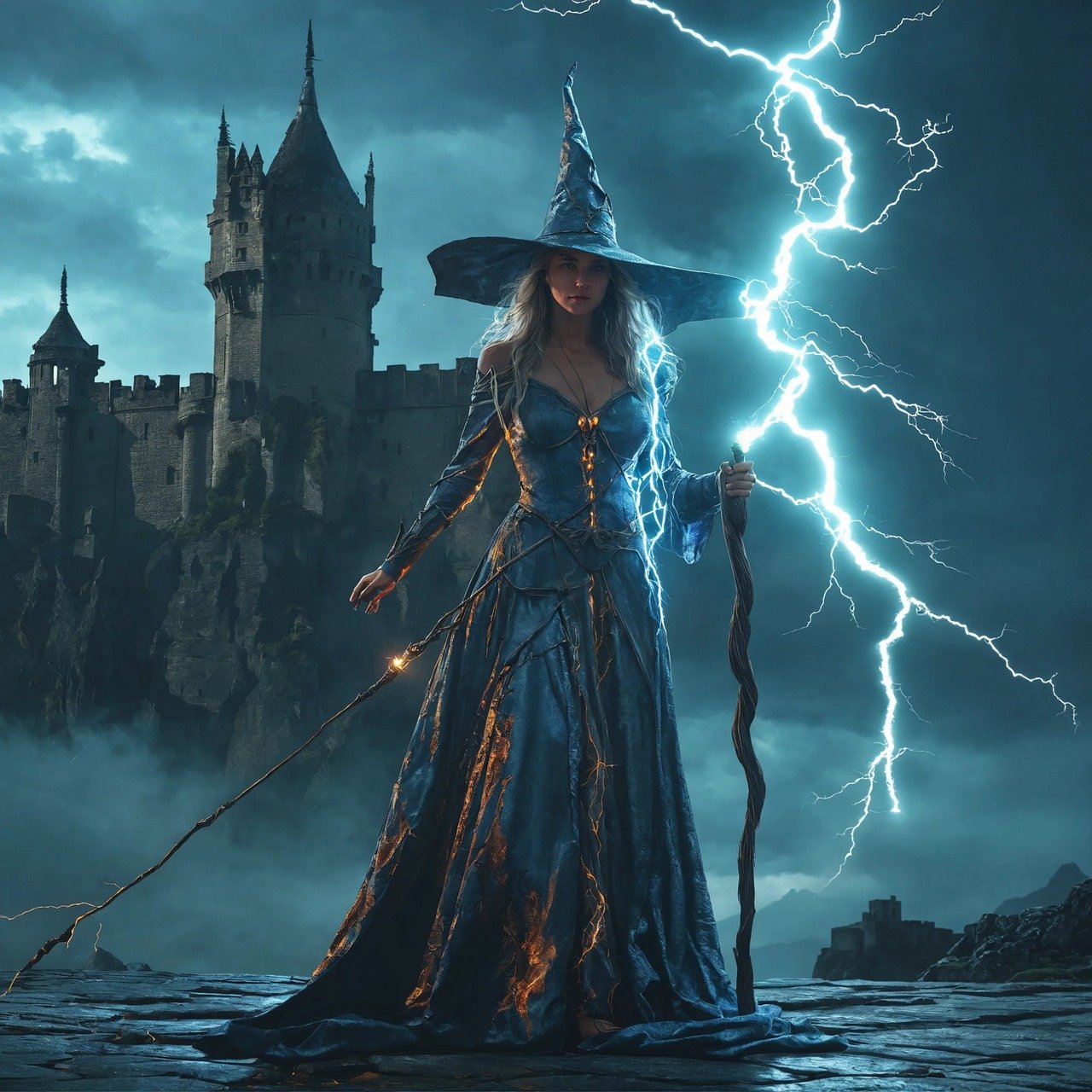The portrayal of influential women in literature and film often reflects the artist’s internal world, shaped by their relationships with women in their lives—especially their mothers. Through the works of C.S. Lewis (The Chronicles of Narnia), J.R.R. Tolkien (The Lord of the Rings), and L. Frank Baum (The Wizard of Oz), we can explore how these relationships influenced their creative portrayals of female characters. From an object relations perspective, these works reveal the authors’ struggles, ideals, and psychological processes in reconciling maternal and feminine archetypes.
C.S. Lewis: Longing and Splitting
C.S. Lewis’s early loss of his mother left a deep void in his psyche, shaping his internalized “mother object” into fragmented and dualistic images. This splitting manifests in The Chronicles of Narnia, particularly in The Lion, the Witch, and the Wardrobe.
- The White Witch: The White Witch represents the rejecting maternal object. Her cold, manipulative demeanor embodies the fear and pain associated with maternal absence and abandonment.
- Lucy Pevensie: Lucy symbolizes the idealized mother—a figure of warmth, faith, and unconditional love. Through Lucy, Lewis projects the nurturing presence he lost as a child.
Later in life, Lewis’s relationship with his wife, Joy Davidman, introduced a more complex understanding of women. While Joy provided intellectual companionship and emotional intimacy, her death reignited Lewis’s childhood grief, perpetuating the ambivalence seen in his female characters.
J.R.R. Tolkien: Integration and Reverence
In contrast, J.R.R. Tolkien’s relationship with his mother, Mabel, was foundational and formative. Mabel’s devotion and sacrifices allowed Tolkien to internalize a cohesive, nurturing maternal object. This secure attachment is evident in the women of The Lord of the Rings.
- Galadriel: Galadriel embodies wisdom, grace, and moral strength—qualities Tolkien associated with his mother. She serves as a spiritual guide, nurturing the fellowship through her quiet power.
- Éowyn: Éowyn represents strength forged through struggle, echoing the resilience Tolkien admired in his mother. Her defiance of societal norms and her eventual integration of strength and vulnerability reflect Tolkien’s holistic view of femininity.
Tolkien’s lifelong relationship with his wife, Edith, further enriched his portrayals. Edith, the inspiration for Lúthien Tinúviel in Tolkien’s mythology, symbolized devotion, beauty, and love—an enduring muse for Tolkien’s creative imagination.
L. Frank Baum: Integration and Empowerment
- Frank Baum’s The Wizard of Oz presents a different perspective on the maternal and feminine psyche, shaped by his relationships with the strong women in his life. Raised by a feminist mother and married to a suffragist, Baum was deeply influenced by the ideals of women’s empowerment and independence.
- Aunt Em: Dorothy’s caregiver, Aunt Em, represents a practical yet emotionally distant maternal figure. Dorothy’s longing for “somewhere over the rainbow” reflects her search for an idealized maternal presence—one that nurtures and inspires.
- Glinda and the Wicked Witch of the West: These two characters represent the splitting of the maternal archetype:
- Glinda, the Good Witch, is the idealized mother—benevolent, guiding, and protective.
- The Wicked Witch, on the other hand, embodies the persecutory maternal object, representing fear, authority, and rejection.
- Dorothy’s Ruby Slippers: Symbolizing latent power, the ruby slippers reflect Dorothy’s psychological journey of integration. By reconciling the fragmented maternal archetypes and discovering her own agency, Dorothy completes her individuation process.
Baum’s portrayal of feminine power and resilience aligns with his progressive views on gender, offering a balanced and empowering vision of women.
Comparative Insights: From Fragmentation to Empowerment
The portrayals of women by Lewis, Tolkien, and Baum differ in key ways, reflecting their personal histories and psychological landscapes:
- Loss vs. Presence: Lewis’s early loss of his mother led to fragmented and polarized representations of women, while Tolkien’s secure attachment allowed for an integrated and reverent portrayal. Baum, influenced by feminist ideals, transcended traditional archetypes to present women as empowered and multidimensional.
- Splitting vs. Integration: Lewis’s and Baum’s works exhibit a split maternal archetype, with nurturing and rejecting figures existing in opposition. Tolkien, however, integrates these qualities into cohesive characters like Galadriel, who embody both strength and nurturing.
- Psychological Growth: Dorothy’s journey in The Wizard of Oz offers a resolution to the splitting seen in Lewis’s works. Through her journey of self-discovery, Dorothy reconciles opposing maternal archetypes, reflecting Baum’s progressive views on feminine empowerment.
Conclusion: The Influence of Women on Creative Worlds
Through the works of C.S. Lewis, J.R.R. Tolkien, and L. Frank Baum, we see how artists’ relationships with women influence the portrayals of femininity in their creations. From Lewis’s longing and ambivalence to Tolkien’s integration and Baum’s empowerment, these portrayals reveal the authors’ unique relational worlds and psychological processes.
These stories remind us of the enduring influence of maternal and feminine figures on creativity. Whether grappling with loss, celebrating strength, or advocating for empowerment, Lewis, Tolkien, and Baum’s works offer timeless reflections of the women who shaped their lives—and, by extension, our imaginations.








